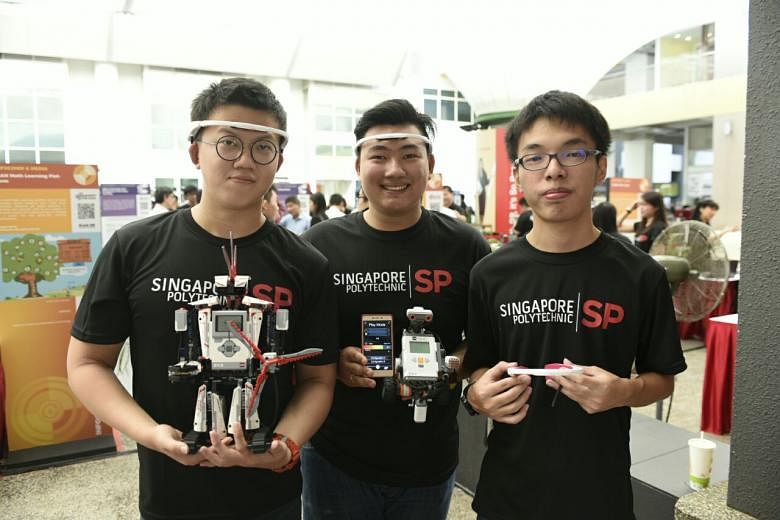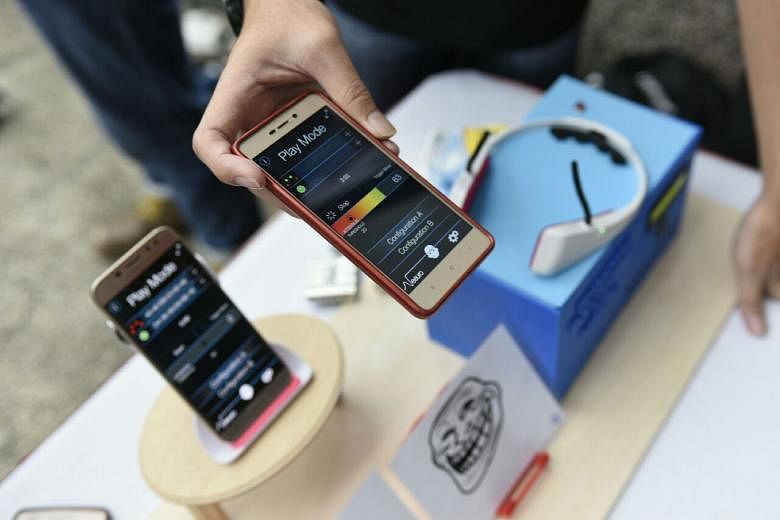SINGAPORE - Children with attention deficit hyperactivity disorder (ADHD) could have a robot companion to help them with their studies from March.
A robot-cum-mobile application has been developed by a team of three Singapore Polytechnic (SP) students from the diploma in electrical and electronic engineering course, in collaboration with tech company Neeuro. It was among 96 final year projects displayed at the annual SP Engineering Show, which was held on Thursday (Jan 18).
The robot and app will be paired to the Senzeband - Neeuro's wearable technology - which tracks the brainwaves of its user via Bluetooth.
The Senzeband monitors a user's concentration levels during study sessions. Every 15 minutes they are given a rating from one to five stars and if concentration levels fall below 2.5 stars, this triggers an alarm from the robot to get the user to re-focus
Users can see how their concentration has improved week on week with the app's stored data.
"ADHD kids have impulsivity issues, so they might not know what they're doing right. So they'll be like, 'Oh, I'm doing the right thing,' even when they're not," said 22-year-old Denzil Ang, who is part of the 10-month-old project.
The new platform will be tested among ADHD children in March. A retail price of $600 has been set.
Another project that may be brought to market soon is the RSP-50 rehabilitation arm brace, a portable device which helps stroke patients regain motor control in their limbs through stretching and strengthening exercises.
A team of three worked with occupational therapists at St. Andrew's Community Hospital to better understand patients' needs.

"Some patients are not very mobile, but still have to travel to places for therapy. This is where our idea for it being home-based come from," said Tan Shu Xian, 20.
The team has tested the arm brace on 10 healthy subjects over the past six months.
The arm brace is still awaiting approval from the relevant authorities. The team hopes to launch it at St Andrew's Community Hospital and rehabilitation centres within the next six months.
Other projects showcased include a robotic barista, a mechanical arm which dispenses drinks like coffee and bubble tea, and an automated transporter that senses and avoids moving obstacles.
Correction note: In an earlier version of the story, we said the students who created the robot-cum-mobile application are from Singapore Polytechnic's diploma in bioengineering course. This is incorrect. The are from the diploma in electrical and electronic engineering course.


